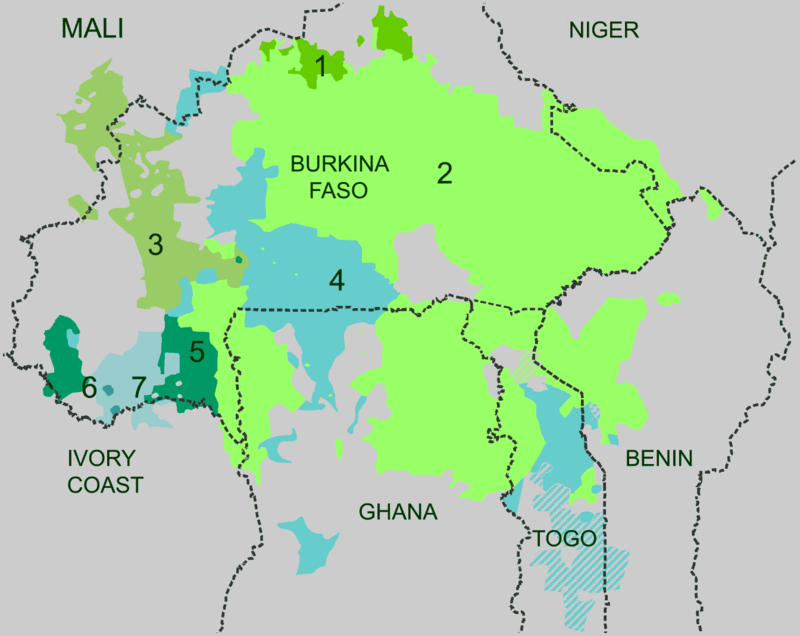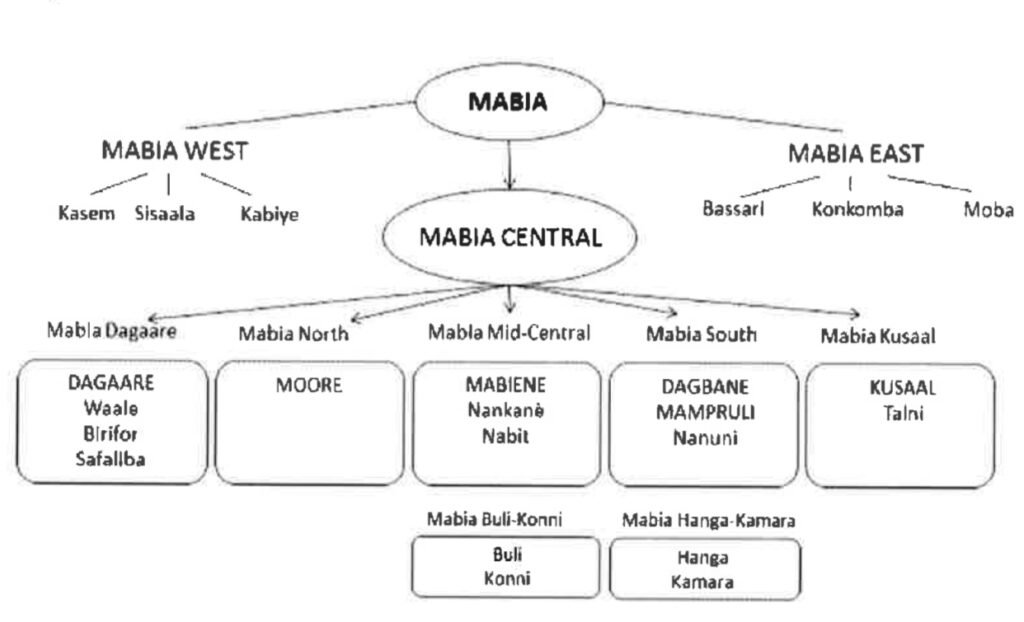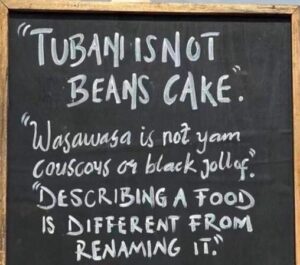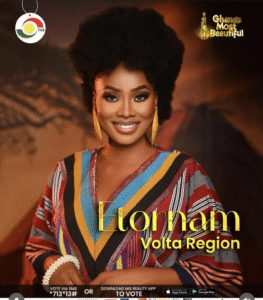
Gur Language Map. Image Source: By Davius - Own work, CC0, https://commons.wikimedia.org/w/index.php?curid=22536212
The Mabia languages, also known in some literature as Gur languages, spoken predominantly in northern Ghana, represent one of the most diverse yet vulnerable linguistic groups in the country. Despite their unique cultural and historical significance, many of these languages face the threat of extinction. Factors such as urbanization, the dominance of more widely spoken languages, and limited resources for language preservation have contributed to their decline. As a result, several Mabia languages are now classified as endangered, with fewer speakers each year. This alarming trend calls for urgent efforts to safeguard these languages before they are lost to future generations.

A study by renowned Mabia scholar Adam Bodomo (Bodomo, 2017) reveals that the Mabia languages, part of the Niger-Congo language family, comprise around 80 languages spoken by over 30 million native speakers. These languages are primarily found in the savanna regions of West Africa, particularly in the Middle Belt, situated between the southern forests and the northern Sahara Desert. This geographical area spans present-day northern Ghana, northern Ivory Coast, northern Togo, northern Benin, northwestern Nigeria, Mali, and Burkina Faso. However, this article focuses on the Gur/Mabia languages spoken in northern Ghana.
According to Ethnologue, language endangerment occurs when a language is no longer passed on to children, which disrupts the transmission of that language to the next generation. Without this vital link, languages become vulnerable to extinction. In Ghana, research has shown that the Mabia languages, one of the country’s largest linguistic groups, are the most affected by this troubling phenomenon. This situation has placed many of these languages at significant risk, creating an urgent need for preservation efforts to ensure they do not disappear entirely.
As mentioned earlier, the Mabia/Gur language group boasts the most dialects in Ghana. Several of these dialects have gained institutional recognition, including Dagbani, Kusaal, Kasem, Gurune, Dagaare, Likpakpaanl, and Sisaala, all of which are studied up to the PhD level at the University of Education, Winneba. In addition to these institutional dialects, the Gur or Mabia language family includes many other dialects, such as Kabiye, Kokomba, Mampruli, Wali, Hanga, Safaliba, Moore, Nabit, Nanuni, Buli, Koni, and more.

The vast number of the Gur/Mabia languages in Ghana has led Bodomo (ibid.) to classify them more systematically. In his work, Bodomo uses the term “Mabia” interchangeably with “Gur” due to historical classifications by scholars like Westermann & Bryan (1952) and Greenberg (1963). These earlier scholars used “Gur” to refer only to a subset of the broader language group, specifically the Western Oti-Volta languages. This article has reserved a comprehensive classification of the language for a separate publication.

A study by Ethnologue identifies eight endangered languages in Ghana: Chakali, Dompo, Animere, Kantonsi, Nchumburu, Chala, Bimoba, and Adangbe. However, it’s important to note that Bimoba, spoken in the Northern and Upper East Regions, has around 270,000 speakers, which challenges its classification as endangered. Similarly, Adangbe is often considered another name for Dangme, an institutional language widely spoken in the Eastern and Greater Accra Regions. Among the endangered languages listed by Ethnologue, three belong to the Gur language group: Chala, spoken in the Nkwanta South District of the Oti Region and the Kpandai District of the Northern Region; Kantonsi, found in the Upper East Region, including areas like Sandema, Navrongo, Bolgatanga, and Wa, with about 4,100 speakers; and Chakali, spoken by nearly 3,500 people across seven villages in the Wa East District of the Upper West Region.
It must be noted that, there may even be some hidden Gur/Mabia languages that are being affected by endangerment taking into consideration its numbers. It is crucial for agencies, the government, NGOs, and all stakeholders to implement robust policies, such as educational integration, community-based revitalization, legal protection, and technological promotion, to combat this threat and ensure the survival of these vital Gur/Mabia languages.
Editor: Ama Gyesiwaa Quansah.





